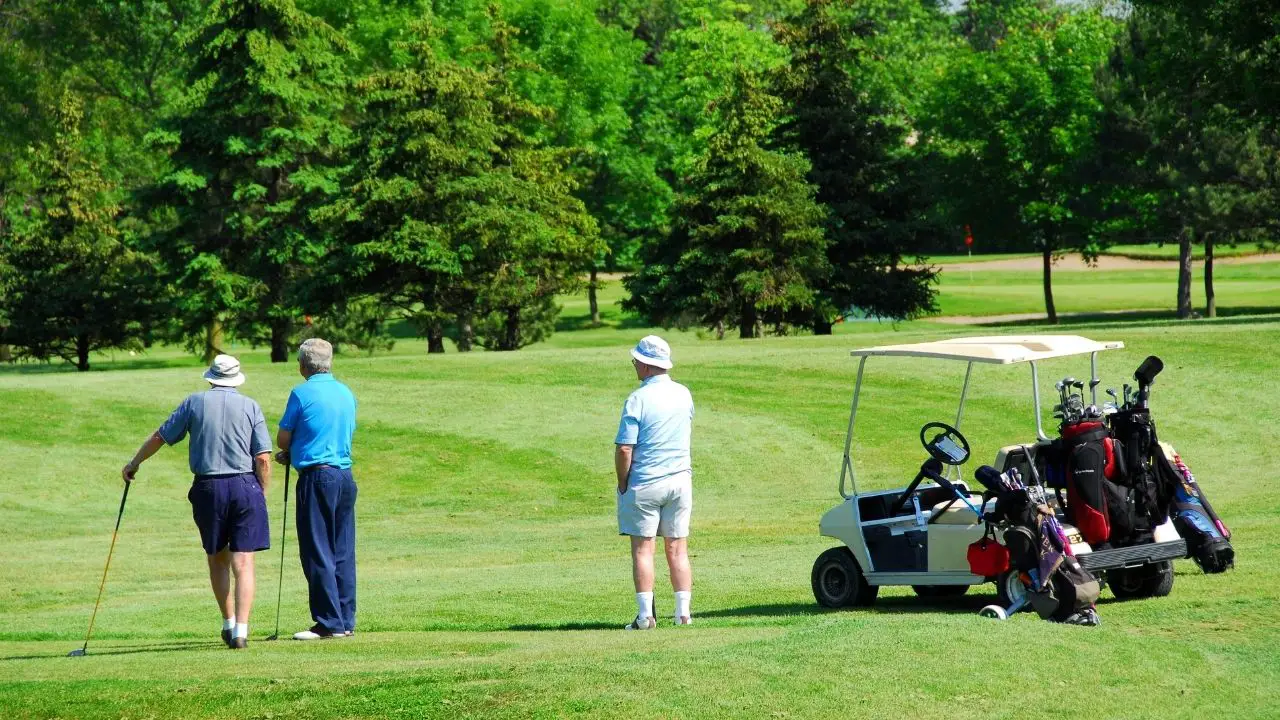Skin diseases and rashes are common health problems in the elderly but not the only ones, in this article, I will write about skin diseases and other health problems which are typical for the elderly.
The skin is one of the largest organs in the human body and has many functions such as protection against pollutants, regulating body temperature and more.
Also, make sure to check out my post on Do’s and Don’Ts When Dealing With an Elderly Alcoholic Parent.
As part of natural aging, the skin also ages and loses some of its properties.
As a result, common diseases in the elderly can also adversely affect the skin.
As one grows older, the changes in body structure and skin make him more sensitive to certain problems and diseases. There are many factors that can determine skin and body changes as a person ages. These factors are heredity, nutrition, lifestyle and personal habits such as smoking, poor nutrition, lack of exercise and tanning.
Table of Contents
Common health problems in the elderly
Like I have mentioned in the beginning, Skin diseases are variant and very Common Health Problems In The Elderly, therefore, I will start with them and I will address them in more details.
Skin diseases that are common in old age:
Dry and itchy skin:
Exfoliation of the skin is common in the elderly and is the result of dry, aging skin.
When peeling is accompanied by itching, it may indicate the onset of diabetes, kidney disease or liver disease.
Using a moisturizer (regular or therapeutic) will regularly help restore skin moisture and reduce symptoms of dry skin.
Skin cancer:
In hot countries, sun exposure is strong and can lead to the development of skin cancer over many years.
The appearance or change of a mole, skin growth, skin glands, and so on – all of which can indicate skin cancer.
A dermatologist will diagnose (if necessary a sample will be taken for examination) if this is indeed a disease or other phenomenon.
Pressure wounds:
This is an open wound in the skin caused by force or pressure exerted on a particular area of the body so that in fact creates both a form of necrosis and visible wound.
Most of the pressure wounds appear in the lower body in areas such as the pelvis, ankles, heels, elbows, spine, knees, lower back, buttocks and more.
Of course, the wounds can also appear in the head, the rest of the back, and more.
Causes of pressure wounds
The general cause of pressure wound is the application of local pressure or focused force on a specific skin area of the body, which causes the formation of a wound.
There are three types of pressure that can cause pressure wounds:
- Pressure from squeezing the skin in a certain place, which happens to many who are sitting or lying down for a very long time.
Adults who are limited in their movement or are in a medical condition because they are confined to their beds are more likely to develop pressure wounds. - Continuous or repeated rubbing of an area of the body, especially in areas where an object is prominent, such as elbows.
- Prolonged or repetitive stretching in a specific area of the body (called a “shear effort”), which occurs for example in people who are attached with a harness to a wheelchair that is not suitable for them, so that they stretch to two opposite sides that create a wound in the skin.
As long as pressure is exerted on the organ or area of the body for more than a few hours without movement, the wound is likely to develop.
Adults who usually have not strong enough immune system (especially nursing elderly), infections and edema can occur due to pressure wounds.
These adults, who are bedridden by their health, do not always feel the pressure on the organs, so they do not always respond when the wound is discovered only later.
How to threat pressure wounds?
In situations where there is a risk of developing pressure wounds, frequent changes in posture are important.
There are also various accessories, mattresses, and special pillows which divide the body weight in a different and more equal way and thus prevent the formation of focused pressure on the skin which can cause a pressure wound.
In addition, it is necessary to treat a high-protein diet and to give antibiotics (in consultation with a doctor, of course).
The wound itself must also be taken care of: cleaning the discharge, preventing pollution and maintaining high hygiene.
Treatment can take a long time, although the wound is created within a short time.
Preventing pressure wounds in adults
In order to prevent the occurrence of pressure wounds in adults – especially those who are confined to a place to sit or bed – they must first change their position for up to two hours at a time.
Support should also be given to prone areas such as lower back, buttocks, and elbows.
If it is possible to fit the bed, the armchair, and wheelchair to the patient, doing it will be excellent.
Even if the adult is in a long-term care situation and is confined to a bed or a wheelchair, it is possible to perform custom exercises that will also help better blood flow and reduce pressure.
All this, with the approval of a doctor of course.
Skin patches:
Although this is not a real disease but the aging of the skin, it is important to follow the various patches on the skin, to make sure that it is not or does not develop into skin cancer.
Infectious skin diseases
Infectious skin diseases are caused by infection with bacteria and viruses.
There are many diseases, and among the elderly, the most common skin infections are:
Fungus:
Besides the more common areas such as the skin between the toes, a fungus can also develop in the elderly in areas of folds of skin (under the breasts, folds of the abdomen, etc.)
Because they create a dark and damp environment that is fertile ground for fungus.
Maintaining high personal hygiene will usually prevent the disease.
Nail fungus:
This disease is present in younger people but is much more common in elderly people due to aging skin, decreased personal hygiene, and a secondary cause of other diseases.
Here too, maintaining hygiene and periodic nail care will help to avoid the disease.
Psoriasis:
Psoriasis is a chronic autoimmune skin disease that is manifested in lesions on the skin’s surface, dandruff, red spots, itching, rashes and more.
The lesions can appear in different parts of the body such as the skin of the face, groin, scalp, and nails.
About a quarter of psoriasis patients are of the golden age.
Contagious Skin diseases
Scabies:
Scabies is caused by infection with subcutaneous corticosteroids.
The disease is very contagious and causes severe skin itching.
Most of the disease occurs due to infection from another person (contact) who has the disease and even from the common use of clothes or towels infected by a person suffering from the disease.
Signs of the disease are:
Intense itching (more severe at night), rashes on the skin of the elderly with red ties, sometimes reddish lines in the skin (resulting from the holes that the crayon digs in the skin to lay eggs).
In the elderly, the risk of catching the disease is higher due to decreased immune function.
In homes where the density is high (for example, the number of beds in one room), the disease can infect the elderly with relative ease if it is not diagnosed and treated immediately.
Herpes:
Herpes is a viral disease that can affect various parts of the body, from the lips in its lighter form, to genitalia and eyes in its more difficult form.
The disease is very contagious when the bacterium is in an active condition (rash of the skin, warts, etc.). In the elderly, the disease can also damage peripheral nerves in the limbs.
The treatment may include special creams and even specific pills – the dermatologist will diagnose and decide on the right treatment.
Skin diseases on a mental background
There is no doubt that the mind affects the body and vice versa. Stress and crisis situations can cause various skin effects.
In the elderly, the appearance of illness, loss of a partner, decrease in function, forgetfulness, etc., also cause mental stress, which can also result in various skin diseases.
A new Medical field has developed due to these phenomena, in order to provide a response to skin diseases on the basis of psychological – psycho-dermatological medicine.
These physicians will provide an integrated response, both psychological and medical-dermatological to diseases. Types of skin diseases whose mental connection is being tested are psoriasis, dermatitis, acne, sudden baldness, skin asthma etc.
Common health problems in the elderly
Arthritis
With over a hundred different types of arthritis, elderly suffer mainly from degenerative arthritis.
This condition may be caused by age, trauma or arthritis.
The disease is manifested in pain and muscle stiffness, and unfortunately, both symptoms may worsen over time.
Diabetes mellitus
Metabolic disorder of type 2 diabetes, most common among elderly, is characterized by high blood sugar and insulin deficiency.
People suffering from this disease experience increased thirst and hunger, weight loss and fatigue.
If the condition is not treated, it may cause other problems such as kidney disease and heart failure.
Alzheimer’s disease
This disease is usually diagnosed in 65-year-old people and older.
This is the most common form of dementia, and its stages develop from early Alzheimer’s to advanced stages.
While there is no cure for this disease, studies show that diet, dietary supplements or exercise may improve symptoms and prevent the risk of heart disease.
Heart failure
The various causes of this disease are diabetes, obesity, heart attacks, hypertension, aortic disease, lung valves, and deterioration of heart muscle function.
The most common symptoms are shortness of breath, coughing and swelling of the ankles.
Parkinson’s disease
It is a degenerative disease of the central nervous system that affects motor skills, cognitive processes, and other bodily functions.
Parkinson’s usually affects people over the age of sixty, although the disease may affect young people as well.
The most common symptoms include tremors, joint stiffness, slowness or lack of movement, speech and swallowing difficulties, fatigue, and mobility disorders and balance.
Cancer
Recent research suggests that environmental factors and lifestyle are a leading cause of cancer among seniors.
In addition, smoking, poor nutrition, lack of physical activity and exposure to solar radiation are the main reasons. Only five to ten percent of cancers in older ages are the result of genetics.
I hope that you have found my article on common health problems in the elderly useful.
If you have any additional information, questions or suggestions, please leave them in the comment below.
I have a related article that about disabled and elderly back pain which you might find as interesting,

Hi, my name is Eddie, I am a professional trainer specializing in the elderly population and I’m also a website designer. I love training in the gym, going to the beach, traveling, and having good food.
I combined my love for sport and website designing to make “DisabilitEase” whose purpose is to help elderly and disabled people live a more full and active life, have more fun, and enjoy their unique journey despite any disability.



